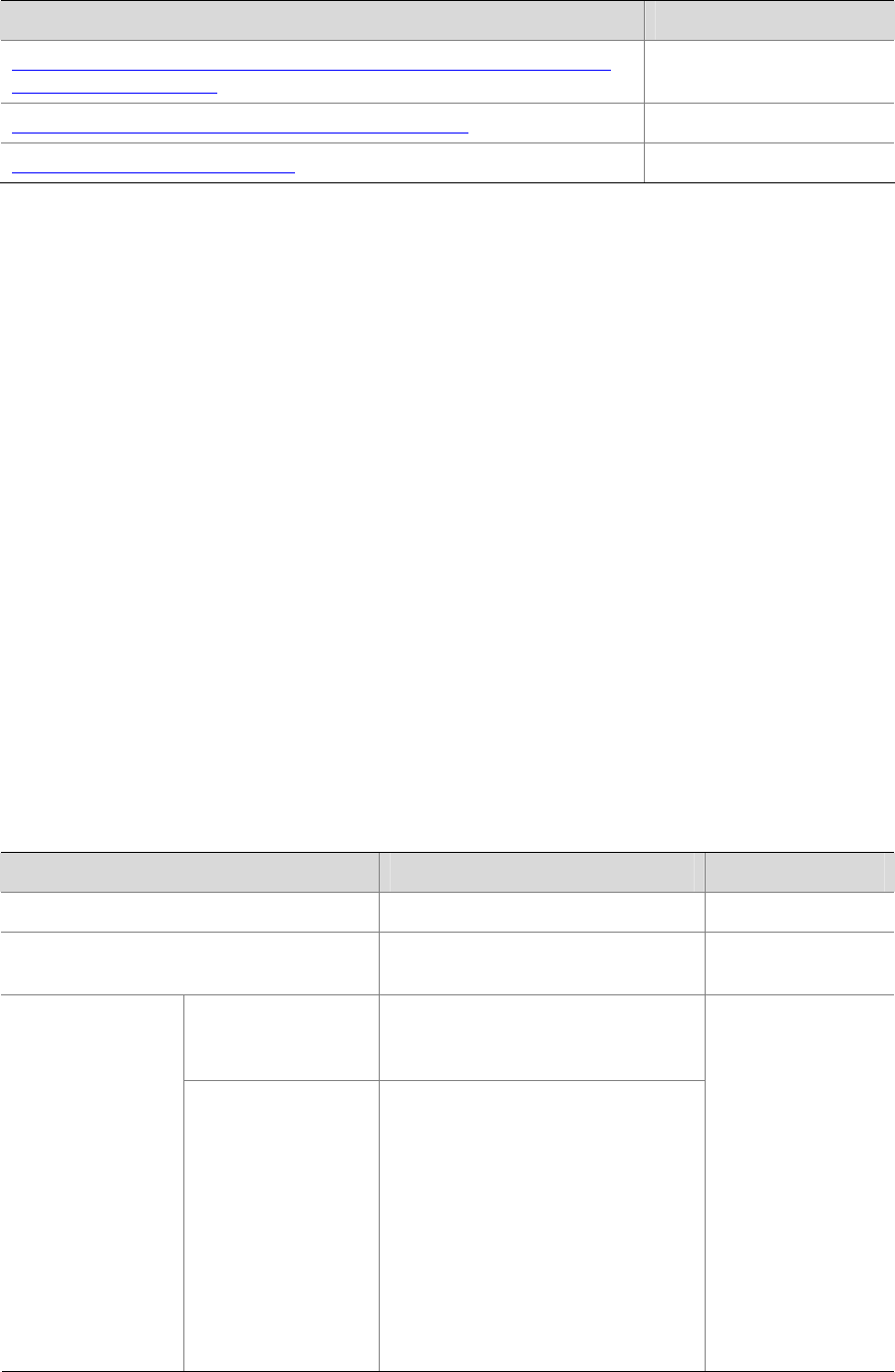
1-9
Task Remarks
Configuring the Maximum Number of IPv6 ICMP Error Packets Sent
within a Specified Time
Optional
Configuring the Hop Limit of ICMPv6 Reply Packets Optional
Displaying and Maintaining IPv6 Optional
Configuring an IPv6 Unicast Address
z An IPv6 address is required for a host to access an IPv6 network. A host can be assigned a global
unicast address, a site-local address, or a link-local address.
z To enable a host to access a public IPv6 network, you need to assign an IPv6 global unicast
address to it.
IPv6 site-local addresses and global unicast addresses can be configured in either of the following
ways:
z EUI-64 format: When the EUI-64 format is adopted to form IPv6 addresses, the IPv6 address prefix
of an interface is the configured prefix and the interface identifier is derived from the link-layer
address of the interface.
z Manual configuration: IPv6 site-local addresses or global unicast addresses are configured
manually.
IPv6 link-local addresses can be acquired in either of the following ways:
z Automatic generation: The device automatically generates a link-local address for an interface
according to the link-local address prefix (FE80::/64) and the link-layer address of the interface.
z Manual assignment: IPv6 link-local addresses can be assigned manually.
Follow these steps to configure an IPv6 unicast address:
To do... Use the command... Remarks
Enter system view
system-view
—
Enter VLAN interface view
interface interface-type
interface-number
—
Manually assign an
IPv6 address
ipv6 address { ipv6-address
prefix-length |
ipv6-address/prefix-length }
Configure an IPv6
global unicast
address or
site-local address
Adopt the EUI-64
format to form an
IPv6 address
ipv6 address
ipv6-address/prefix-length eui-64
Use either
command
By default, no
site-local address
or global unicast
address is
configured for an
interface.
Note that the prefix
specified by the
prefix-length
argument in an
EUI-64 address
cannot exceed 64
bits in length.


















